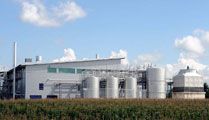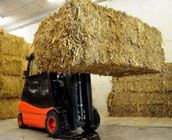
Clariant, a world leader in specialty chemicals, is demonstrating the international potential of its process for manufacturing sustainable biofuel through the expansion of sunliquid® technology to further agricultural residues. Following the opening of Germany’s largest demonstration plant for manufacturing ethanol from agricultural residues in July 2012, the company now has new findings, which show that corn stover, the most valuable raw material in North America, and sugarcane bagasse, a cellulose-rich by-product of sugar and ethanol production in Latin America and Asia, can also be converted efficiently in the process. European wheat straw has primarily been used to date, and has delivered good results that have even exceeded the expectations of the process developers in some aspects.

“Expanding the technology to other raw materials represents an important milestone in the commercialization of our sunliquid process, extending it far beyond European borders,” explains Dr. Hariolf Kottmann, CEO of Clariant. “In doing so, we are demonstrating that the process is flexible for different raw materials, and can therefore also be used in key markets such as North America, Latin America, and Asia.” The high degree of efficiency of the process, independent of the raw material used, is achieved largely through the use of raw material-specific, highly-optimized enzymes, illustrating one of Clariant’s core competences.

Clariant intends to market the sunliquid process internationally – making it vital that different raw materials can be flexibly and effectively used in the process. Corn stover is primarily important in North America, where 570 million tonnes of this plant residue are generated from the corn harvest every year. In Brazil, ethanol production could be increased by some 50% compared to current levels by using excess bagasse.
Using these plant residues means that there is no competition with food production or for agricultural land. Cellulosic ethanol produced using the sunliquid process reduces greenhouse gas emissions by around 95% compared to fossil fuels. Domestic production of this liquid fuel can also reduce dependence on oil imports and generate economic growth in local markets.
The next step in commercializing this technology is the construction of the first commercial production facility, with a capacity of some 50,000-150,000 tonnes per year, compared with around 1,000 tonnes at the existing pilot plant.
“In sunliquid, we have a mature technology that we now want to apply worldwide,” explains Dr. Markus Rarbach, Head of Start-up Business Biofuels & Derivatives. “We are currently assessing potential partners and locations for the first production facility. Our business model ultimately comprises issuing license packages for the full process.”
Rarbach adds that long-term secure and stable political conditions are also an important requirement in order for a project like this to achieve its entire potential.
(PRA)












